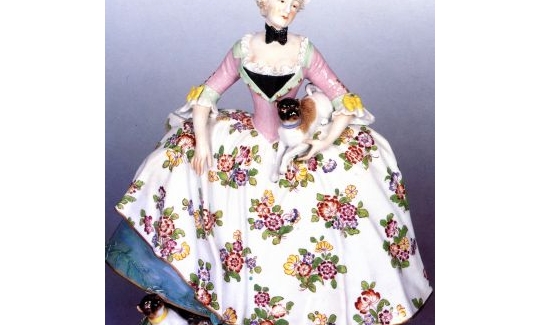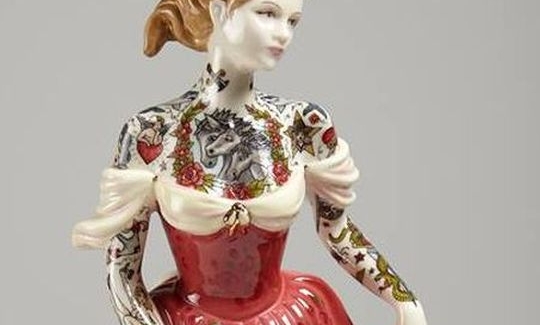Porcelain, a sign of European material culture, was imported decades before the Establishment of the State into domestic space in an attempt to preserve the aromas of times past. Beginning in the 1930s, the growing local demand for dishes and decorative objects led to the establishment of several porcelain factories in Mandatory Palestine. Most of these factories were located in the area between the Haifa Bay and Acre, so that Haifa came to be known as "the capital of ceramics." This exhibition centers on locally produced porcelain sets as a status symbol representative of an imported European culture. The exhibition examines the desire to imitate European culture in the context of an Israeli, Mediterranean material culture. Setting out to explore the presence of the European past, the exhibition also features the work of contemporary local and international artists.
The Fela and Natan Celink Collection
Porcelain, the noblest and most durable of ceramic materials, has long been displayed in both private collections and art museums in Israel and abroad. In 1987, the Haifa Museum of Music and Ethnology first displayed a selection of objects from the ethnological collection of the Haifa Museums: "The Fela and Natan Celink Collection." This collection was donated by Fela and Natan Celink, a Jewish collector of Polish origin, and featured decorative and functional objects dating from the early eighteenth century to the twentieth century. These objects were created in a number of prominent European factories in Meissen, Germany; Sèvres, France; Vienna, Austria; and Doccia, Italy.
Although this collection did not represent all styles, periods, and sits of porcelain production in Europe, it gave expression to many of the social and economic changes that took place on this continent. The numerous imitations and forgeries of porcelain in the nineteenth and twentieth centuries problematized the classification, dating, and identification of the objects included in the collection. The presentation of this collection to a local Israeli audience shed light on the artistic and aesthetic preferences of the European nobility and bourgeoisie in previous centuries. Yet the decision to present the collection in the city's Museum of Ethnology rather than its art museum displaced it from its position in the historical continuum of European art and design.
In the context of the contemporary Israeli museum world, the category of ethnographic museums continues to grow. Almost every ethnic group in Israel is currently represented in an ethnographic museum dedicated to this unique culture and to the preservation of its heritage. The objects displayed in the museums were detached from their context and designed in order to create a certain cultural narrative. The pantheon of functional art is defined, for instance, in relation to categories such as "The African continent, Jewish communities in the Diaspora and the cultures of Haifa and its environs, such as Druze, Circassian, and Arab cultures" (Nina Benzur, Haifa and Its Sites, 1985).
The introduction of European material culture into this pantheon imposes upon it an "ethnic" perspective. In this context, European porcelain is presented as both "exotic" and "anachronistic," as irrelevant to any cultural discourse in the present. The current exhibition seeks to present a rereading of "The Fela and Natan Celink Collection" in the context of local discourse, in an attempt to read the entrance of porcelain into the Middle-Eastern sphere, as part of a structured ensemble of models and signs of European culture introduced into the domestic sphere.




